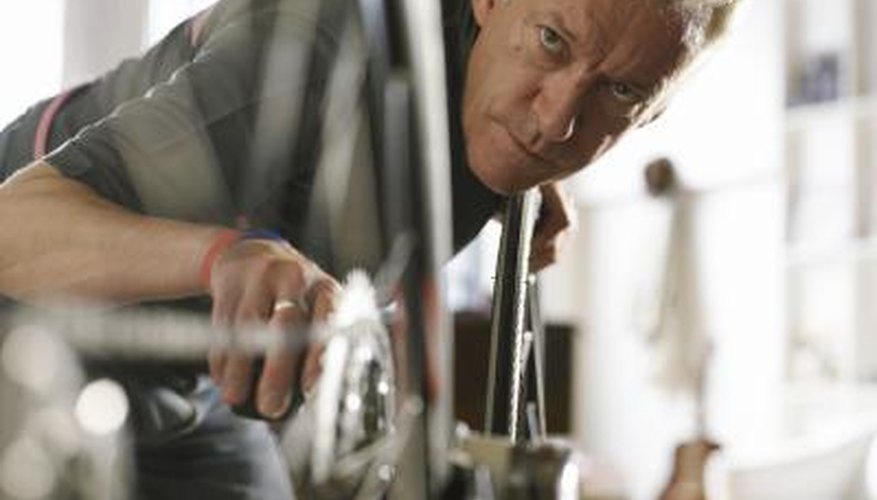Aerospoke has been in the business of making composite wheels for over 20 years. The wheels are perhaps most notable for their appearance–rather than traditional wire spokes, Aerospoke wheels feature five composite slats moulded into the rim and hub. Despite their futuristic appearance, Aerospoke hubs still rely on traditional bearings in order to operate. Bearings are replaced whenever their grease has dried or the surface of the bearing has become pitted from use. Dry or damaged bearings are often noisy.
Remove the front wheel from the bicycle and place the centre of the wheel over a shop rag. The rag will catch any bearings or small parts that fall out during disassembly.
- Aerospoke has been in the business of making composite wheels for over 20 years.
- The rag will catch any bearings or small parts that fall out during disassembly.
Slide a 13mm cone wrench onto the left, or non-drive side, axle cone of the Aerospoke wheel. The cone is located between the wall of the hub and the axle nut.
Attach an adjustable wrench to the axle nut beside the cone. Turn the wrench counterclockwise against the cone wrench.
Unthread the locknut and cone and slide the axle from the right side of the hub. Clean any old grease from the axle with a rag.
Use a set of tweezers to remove the desired bearing from the bearing cup. The bearings are on both sides of the hub.
- Slide a 13mm cone wrench onto the left, or non-drive side, axle cone of the Aerospoke wheel.
- Use a set of tweezers to remove the desired bearing from the bearing cup.
Use the tweezers to press the new bearing into place inside the bearing cup on the wheel. The new bearing must be the same size as the old one. If in doubt, take the old bearing to a bicycle shop, where you can purchase a replacement.
Apply a fresh bead of waterproof grease to the bearings and over the length of the axle.
Slide the axle back through the right side of the hub. Be careful not to disturb the bearings.
Thread the left side cone back onto the axle. Follow the cone with the axle nut, tightening them with your fingers only.
- Use the tweezers to press the new bearing into place inside the bearing cup on the wheel.
- Follow the cone with the axle nut, tightening them with your fingers only.
Use an adjustable wrench to tighten the left side locknut against the cone. The wheel should spin freely, without binding. If the wheel binds, you’ve over-tightened the locknut. If there is side-to-side play in the hub, you’ve under-tightened the locknut.
